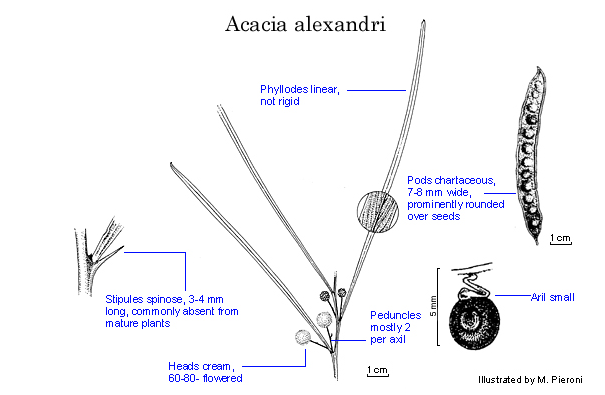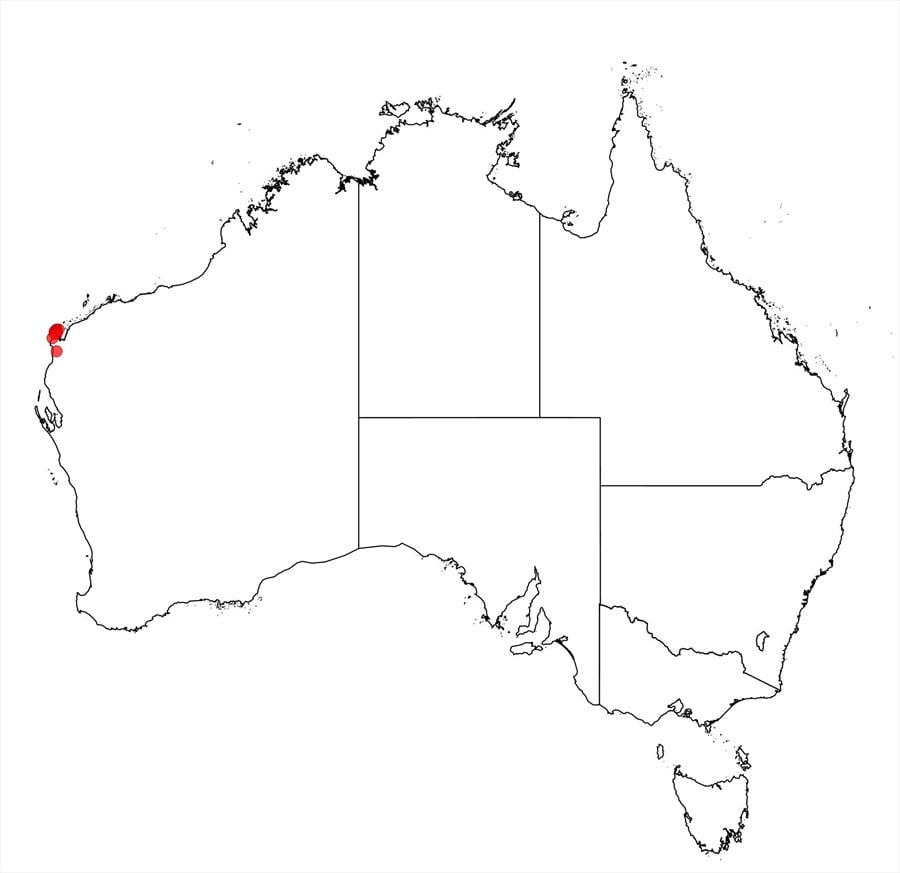Acacia alexandri Maslin
WATTLE
Acacias of Australia
Family
Fabaceae
Distribution
Restricted to the Cape Ra., north-western W.A.
Description
Glabrous shrub 1.5–3 m high. Branchlets slender. Stipules spinose, commonly absent or infrequent on mature plants, 3–4 mm long, slender. Phyllodes linear, 6–13 cm long, 2.5–6 mm wide, rarely to 11 mm, narrowed at base, not rigid, 1-nerved, finely penninerved; gland not prominent, 0–2 mm above pulvinus. Inflorescences simple, mostly 2 per axil, initiated synchronously with phyllodes on new shoots; racemes rare; peduncles 8–15 mm long, slender, with caducous bract near or above middle; heads globular, densely 60–80-flowered, cream. Flowers 5-merous; sepals free, narrowly spathulate. Pods narrowly oblong, prominently rounded over seeds, to 7 cm long, 7–8 mm wide, chartaceous. Seeds variably aligned, commonly transverse, globose, c. 4 mm diam., dull, blackish, yellow around pleurogram; funicle short; aril depressed-clavate.
Habitat
Grows in pink loam on rocky limestone slopes in mallee shrubland.
Specimens
W.A.: Cape Ra., A.S.George 2479 (PERTH); K.F.Kenneally 7337 (BRI, CANB, MEL, PERTH).
Notes
Allied to the widespread A. victoriae which has usually shorter phyllodes, mostly racemose, 15–30-flowered heads, 9–16 mm wide pods and mottled seeds. Acacia synchronicia, another member of the ‘A. victoriae group’, occurs in the Cape Ra. but has much shorter phyllodes and golden flower-heads.
FOA Reference
Data derived from Flora of Australia Volumes 11A (2001), 11B (2001) and 12 (1998), products of ABRS, ©Commonwealth of Australia
Author
B.R.Maslin
This identification key and fact sheets are available as a mobile application:
URL: https://apps.lucidcentral.org/wattle/
© Copyright 2018. All rights reserved.







